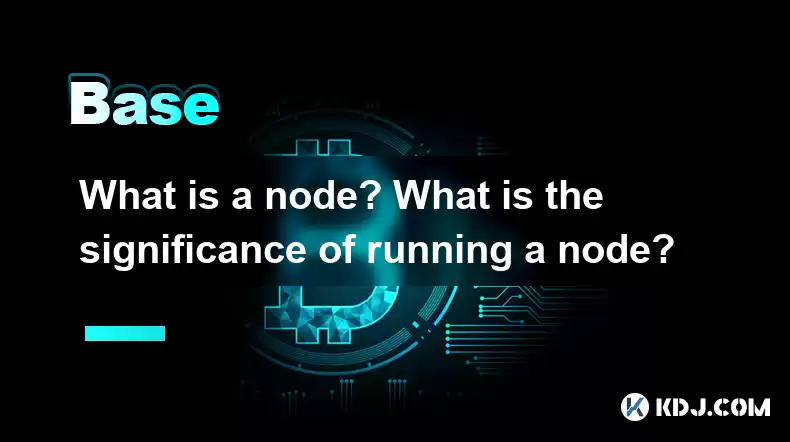-
 Bitcoin
Bitcoin $114200
0.00% -
 Ethereum
Ethereum $3637
0.56% -
 XRP
XRP $2.950
-2.01% -
 Tether USDt
Tether USDt $0.9999
0.02% -
 BNB
BNB $761.0
0.55% -
 Solana
Solana $164.1
-1.38% -
 USDC
USDC $0.9999
0.02% -
 TRON
TRON $0.3332
0.36% -
 Dogecoin
Dogecoin $0.2012
-0.52% -
 Cardano
Cardano $0.7261
-1.41% -
 Hyperliquid
Hyperliquid $37.62
-2.13% -
 Stellar
Stellar $0.3930
-2.65% -
 Sui
Sui $3.441
-0.16% -
 Bitcoin Cash
Bitcoin Cash $563.8
0.70% -
 Chainlink
Chainlink $16.50
0.09% -
 Hedera
Hedera $0.2424
-0.14% -
 Ethena USDe
Ethena USDe $1.001
0.01% -
 Avalanche
Avalanche $22.20
0.00% -
 Litecoin
Litecoin $118.0
-2.48% -
 UNUS SED LEO
UNUS SED LEO $8.991
0.12% -
 Toncoin
Toncoin $3.195
-3.87% -
 Shiba Inu
Shiba Inu $0.00001217
0.12% -
 Uniswap
Uniswap $9.674
-0.21% -
 Polkadot
Polkadot $3.633
1.00% -
 Monero
Monero $295.3
-0.82% -
 Dai
Dai $0.9999
0.00% -
 Bitget Token
Bitget Token $4.321
-0.41% -
 Cronos
Cronos $0.1392
0.73% -
 Pepe
Pepe $0.00001027
-0.89% -
 Aave
Aave $258.5
0.32%
What is a node? What is the significance of running a node?
Cryptocurrency nodes, computers validating blockchain transactions, enhance network decentralization and security. Different node types exist, each with varying resource needs and potential rewards, ranging from mining to staking. Running a node requires technical skills and suitable hardware.
Mar 05, 2025 at 12:06 pm

Key Points:
- A node is a computer connected to a cryptocurrency network that participates in validating and relaying transactions.
- Running a node contributes to network decentralization, security, and censorship resistance.
- Different types of nodes exist, each with varying levels of participation and resource requirements.
- Running a node can be technically challenging and requires specific hardware and software.
- The rewards for running a node vary depending on the cryptocurrency and the type of node.
What is a Node?
In the context of cryptocurrencies, a node is essentially a computer that connects to and participates in a blockchain network. Think of it as a vital component of the decentralized infrastructure that underpins cryptocurrencies like Bitcoin and Ethereum. Each node maintains a copy of the blockchain, the public ledger recording all transactions. This distributed ledger system is what makes cryptocurrencies secure and transparent. Nodes communicate with each other, sharing transaction data and ensuring the integrity of the blockchain.
What are the Different Types of Nodes?
Not all nodes are created equal. They differ in their functionalities and the level of participation they offer to the network. Here are some common types:
- Full Nodes: These are the workhorses of the network. They download and verify the entire blockchain, participating fully in consensus mechanisms like Proof-of-Work or Proof-of-Stake. They are crucial for network security and are considered the most reliable nodes.
- Lightweight Nodes (SPV Nodes): These nodes download only a portion of the blockchain, specifically the headers of each block. They are less resource-intensive than full nodes, making them suitable for users with limited bandwidth or storage. However, they rely on full nodes for complete transaction verification.
- Mining Nodes: These are specific to Proof-of-Work cryptocurrencies like Bitcoin. They compete to solve complex mathematical problems to add new blocks to the blockchain. The first to solve the problem gets to add the block and is rewarded with newly minted cryptocurrency.
- Masternodes: These are specialized nodes that offer additional services to the network, such as governance or transaction processing. They typically require a significant stake in the cryptocurrency to operate.
What is the Significance of Running a Node?
Running a node, especially a full node, plays a vital role in maintaining the health and integrity of a cryptocurrency network. The significance stems from several key aspects:
- Decentralization: By running a node, you contribute to the decentralization of the network, making it more resilient to censorship and single points of failure. A decentralized network is inherently more robust and less susceptible to manipulation.
- Security: Each node independently verifies transactions, preventing fraudulent activities and ensuring the integrity of the blockchain. More nodes mean a more secure network.
- Censorship Resistance: A distributed network of nodes makes it extremely difficult for any single entity to censor transactions or manipulate the blockchain. This is a crucial aspect of cryptocurrencies' promise of freedom and autonomy.
- Network Participation: By actively participating in the network, you contribute to its overall efficiency and performance. Your node helps relay transactions and maintain the consensus mechanism.
Technical Requirements for Running a Node:
Running a node, especially a full node, can be technically challenging and resource-intensive. It requires:
- Sufficient Hardware: A powerful computer with ample storage space (to hold the blockchain), RAM, and processing power is essential. The requirements vary significantly depending on the cryptocurrency.
- Reliable Internet Connection: A stable and high-bandwidth internet connection is crucial for continuous network participation. Interruptions can lead to your node falling behind and becoming less effective.
- Technical Expertise: A basic understanding of networking, operating systems, and command-line interfaces is helpful. Setting up and maintaining a node requires some technical skills.
- Appropriate Software: You'll need to download and install the specific software client for the cryptocurrency you want to run a node for.
Rewards for Running a Node:
The rewards for running a node vary considerably across different cryptocurrencies. Some key considerations include:
- Mining Rewards (PoW): In Proof-of-Work cryptocurrencies, miners (nodes that solve computational problems) receive newly minted coins as a reward.
- Staking Rewards (PoS): In Proof-of-Stake systems, nodes that stake their coins can earn rewards for validating transactions and participating in consensus.
- Masternode Rewards: Masternode operators earn rewards for providing services to the network, such as governance or transaction processing.
- Community Contributions: Beyond direct financial rewards, running a node contributes to the overall health and success of the cryptocurrency community. You're actively supporting a decentralized and censorship-resistant system.
Common Questions and Answers:
Q: How much does it cost to run a node? The cost depends on the type of node, the cryptocurrency, and your existing hardware. Full nodes for larger blockchains can be expensive due to storage and bandwidth requirements. Lightweight nodes are significantly cheaper.
Q: Is running a node profitable? Profitability is highly dependent on the cryptocurrency, the type of node, and the current market conditions. Mining rewards can be substantial for some cryptocurrencies, but the costs of hardware and electricity need to be considered. Staking rewards are generally lower but require less upfront investment.
Q: What are the risks of running a node? Risks include hardware failure, internet outages, and security vulnerabilities. Proper security measures, backups, and a stable infrastructure are crucial to mitigate these risks. Also, the value of the cryptocurrency you are running a node for can fluctuate significantly, impacting your potential profits or losses.
Q: How much technical knowledge is needed to run a node? The technical expertise required varies depending on the type of node and the cryptocurrency. While full nodes often require a more advanced understanding, lightweight nodes are more accessible to users with less technical experience. Many communities offer support and tutorials to help users set up and maintain their nodes.
Disclaimer:info@kdj.com
The information provided is not trading advice. kdj.com does not assume any responsibility for any investments made based on the information provided in this article. Cryptocurrencies are highly volatile and it is highly recommended that you invest with caution after thorough research!
If you believe that the content used on this website infringes your copyright, please contact us immediately (info@kdj.com) and we will delete it promptly.
- EIP-7999: Ethereum's Fee Fixer-Upper – Is This the End of Gas Fee Nightmares?
- 2025-08-06 15:10:22
- Ethereum Withdrawals, Institutional Confidence, and a Potential Price Rally: Decoding the Signals
- 2025-08-06 15:30:12
- Ethereum Reform: EIP-7999 and the Quest for Fee-less Crypto?
- 2025-08-06 15:30:12
- XRP, MAGACOIN FINANCE, and Ethereum: What's Hot in the Crypto World?
- 2025-08-06 15:35:12
- Unilabs, Ethereum, and Dogecoin: Navigating the Crypto Landscape
- 2025-08-06 15:35:12
- ETH, BTC, XRP: Navigating Crypto Volatility and Spotting the Next Big Thing
- 2025-08-06 15:40:11
Related knowledge

What is the difference between CeFi and DeFi?
Jul 22,2025 at 12:28am
Understanding CeFi and DeFiIn the world of cryptocurrency, CeFi (Centralized Finance) and DeFi (Decentralized Finance) represent two distinct financia...

How to qualify for potential crypto airdrops?
Jul 23,2025 at 06:49am
Understanding What Crypto Airdrops AreCrypto airdrops refer to the distribution of free tokens or coins to a large number of wallet addresses, often u...

What is a crypto "airdrop farmer"?
Jul 24,2025 at 10:22pm
Understanding the Role of a Crypto 'Airdrop Farmer'A crypto 'airdrop farmer' refers to an individual who actively participates in cryptocurrency airdr...

What is the difference between a sidechain and a Layer 2?
Jul 20,2025 at 11:35pm
Understanding the Concept of SidechainsA sidechain is a separate blockchain that runs parallel to the main blockchain, typically the mainnet of a cryp...

What is the Inter-Blockchain Communication Protocol (IBC)?
Jul 19,2025 at 10:43am
Understanding the Inter-Blockchain Communication Protocol (IBC)The Inter-Blockchain Communication Protocol (IBC) is a cross-chain communication protoc...

How does sharding improve scalability?
Jul 20,2025 at 01:21am
Understanding Sharding in BlockchainSharding is a database partitioning technique that is increasingly being adopted in blockchain technology to enhan...

What is the difference between CeFi and DeFi?
Jul 22,2025 at 12:28am
Understanding CeFi and DeFiIn the world of cryptocurrency, CeFi (Centralized Finance) and DeFi (Decentralized Finance) represent two distinct financia...

How to qualify for potential crypto airdrops?
Jul 23,2025 at 06:49am
Understanding What Crypto Airdrops AreCrypto airdrops refer to the distribution of free tokens or coins to a large number of wallet addresses, often u...

What is a crypto "airdrop farmer"?
Jul 24,2025 at 10:22pm
Understanding the Role of a Crypto 'Airdrop Farmer'A crypto 'airdrop farmer' refers to an individual who actively participates in cryptocurrency airdr...

What is the difference between a sidechain and a Layer 2?
Jul 20,2025 at 11:35pm
Understanding the Concept of SidechainsA sidechain is a separate blockchain that runs parallel to the main blockchain, typically the mainnet of a cryp...

What is the Inter-Blockchain Communication Protocol (IBC)?
Jul 19,2025 at 10:43am
Understanding the Inter-Blockchain Communication Protocol (IBC)The Inter-Blockchain Communication Protocol (IBC) is a cross-chain communication protoc...

How does sharding improve scalability?
Jul 20,2025 at 01:21am
Understanding Sharding in BlockchainSharding is a database partitioning technique that is increasingly being adopted in blockchain technology to enhan...
See all articles

























































































